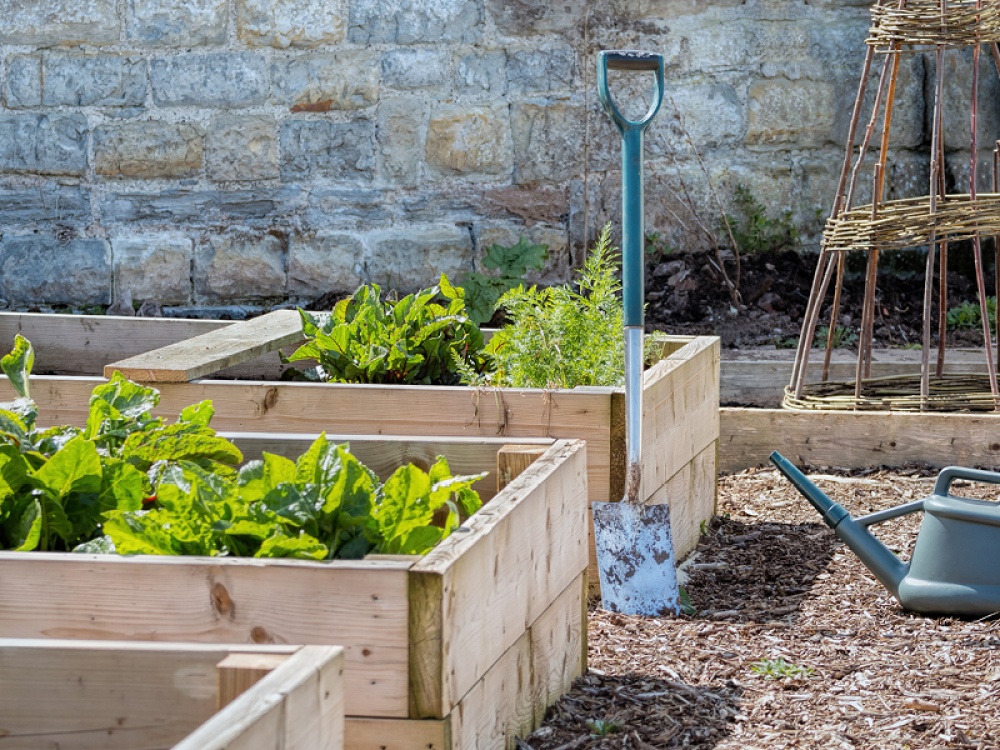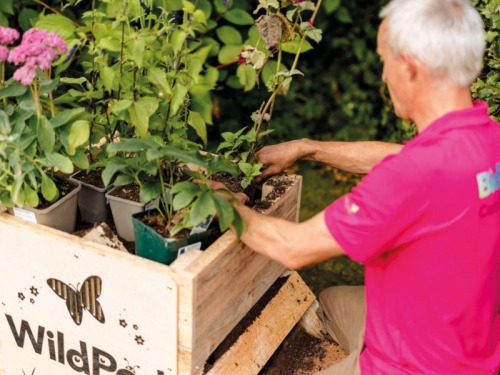Everything You Need to Know about Building Raised Beds in your Garden

Raised beds are a great way of growing a wide range of plants, can be used to introduce a different soil type to your garden and are a good way of boosting drainage
Raised beds can be used to improve drainage, increase soil temperature, enhance root health, improve ease of management, match your soil to the plant or improve ease of access for people with mobility issues. However all of these advantages are only possible if you construct them correctly and that is not always as simple as it might first seem.
Director of Polihull Garden Centre, Josh Novell has answered some of the frequently asked questions about building raised beds here, to save you from making any mistakes the next time you do decide to plant this way.
Here’s the expert advice on how to build raised beds so you’ll be a pro the next time you try your hand at it.

How wide should raised beds be?
Getting the width of a raised bed right is important; you need to be able to reach into the bed so you can sow seeds, plant, water, dig and weed your vegetable patch. However, you need to be able to do it without stepping into the bed itself. Ideally, around three or four feet wide by six or eight feet in length is ideal.
What factors do you need to consider when planning the width of a raised bed?
You always want raised beds to be accessible so that you can reach and easily dig in all areas without needing to stand on it. Treading on a raised garden bed can cause the soil to be compacted, which makes it harder for certain vegetable seeds to germinate and for roots to have enough space to grow
The main factor to consider when working out the maximum width of your raised bed is how far you’re able to lean over the edge to reach the centre and tend to all the plants in it. Your height, age and any mobility issues will make a difference to this.
For instance, if you are tall and able you can opt for a wider raised bed. Equally, if you could foresee issues with leaning forwards, opt for narrower raised beds, where you don’t have to strain yourself to reach the middle zones. Remember, you need to be able to dig, prune and potentially pull out weeds, so you need a good amount of wiggle room!
Can the width of a raised bed impact what you can plant inside?
When planting certain vegetable seeds you need to space them out in rows to give them enough space to grow comfortably side by side. Pumpkins, marrows, leeks, parsnips and carrots for example need a good amount of space between seeds when they are sown, and they take up a fair amount of space by the time they are ready to be harvested.
Fortunately, there are a number of vegetables well suited to smaller spaces. If you want to maximise the space in your raised bed, opt for plants like spring onion, radishes, runner beans, chillies or watercress, for instance.
Be wary of overcrowding in raised beds and ensure you follow planting instructions on the packet to make sure all your vegetables have got the proper space to grow – this includes making sure there is an adequate area of space around the edge, so your plant’s roots don’t grow into the walls
How far apart should raised beds be if you are having more than one?
Be wary when planting raised beds next to each other that you have enough space to manoeuvre between the two beds and tend to both easily. Remember, you will also need to fit a wheelbarrow between the two so that you can fill them in so ensure there is plenty of space for this procedure.
Allowing as much room as possible will also give plants enough space to grow, which is important for plants that grow upwards such as tomatoes, chillies or beans.
'Be wary of overcrowding in raised beds and ensure you follow planting instructions on the packet to make sure all your vegetables have got the proper space to grow'
Where is the ideal spot to put a raised bed in the garden?
As long as you have the space, you can put a raised bed in most spots in your garden. Most raised beds can be built on a variety of surfaces – as long as you ensure they are solid and level. This includes grass, soil, or concrete/paving. If you are building a raised bed on the latter, don’t lay your soil straight onto the concrete when it is built, as this can cause it to seep out after irrigation or rainfall.
Placing a landscape fabric, also sometimes referred to as a geotextile, inside the container will prevent soil leakage when it is filled. If you are creating a raised bed directly on paving or slabs, ensure cracks on the ground of the bed are filled in completely before adding soil and plants, as this will prevent weeds from growing up through them.
Sunlight is an important factor to consider when choosing where to put your raised bed. Start by monitoring your garden to see which spots get more consistent sunlight. If you need, you can plant raised garden beds in shaded areas and simply opt for plants that need less direct light to grow.
If the bed is next to a fence or tree, it may be subject to rain shade, which means it gets less water. This can be easily addressed using irrigation systems and watering the plants more frequently by hand.









